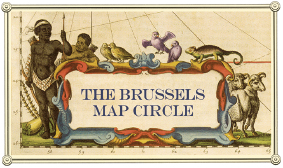Map Scarcity in Early Colonial New England
This article argues that English colonists in New England chose not to make maps between 1620 and 1642 because they had more suitable techniques and technologies available to them, including the superior knowledge of their Algonquian neighbors and their own traditional approaches to measuring land. However, internal and external pressures eventually forced the colonists to begin making maps. As population and demand for land rapidly increased in New England in the 1640s and beyond, the early attempts of the English at cooperative distribution of land were abandoned in favor of a system that emphasized private property, and, consequently, precise boundaries. In these new circumstances, maps served as a powerful tool that settlers used to claim land and defend it from encroachment. Finally, the creation of the Dominion of New England and the arrival of royal officials and map makers in the 1680s completed the transition to a cartographic spatial culture. Despite this, New Englanders had ignored revolutionary developments in map making taking place in England for decades and created a spatial culture unique to New England.
More.
Posted on
